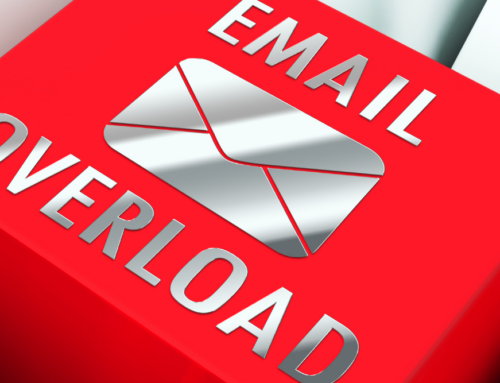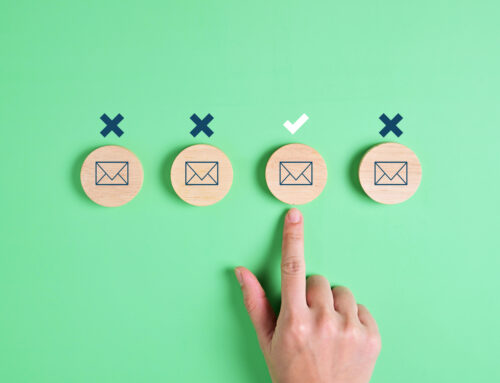
Sarah Tedesco
We’ve talked before about segmenting your email list to send more relevant communications. Today, Sarah Tedesco, Executive Vice President at DonorSearch, shares some ways to segment your donor lists specifically. ~Kristina
Guest Post by Sarah Tedesco of DonorSearch
Donors want and need to be treated like the unique people that they are. That’s easier said than done though.
Ideally, if a nonprofit had the staff, time, and money to fully individualize marketing, that nonprofit would. Realistically, staff, time, and money are limited resources, especially among fundraising organizations.
So, what’s a nonprofit marketer to do?
Donors respond to promotions that actually address their interests, causes, and preferences. The effective and efficient solution is segmenting your donors.
Individualizing marketing per donor is an impossible feat. However, making marketing feel personal is a different story. The right segmentation strategy can give your marketers the ability to customize according to donor need without sacrificing much on the limited resources side of things.
Last year, Nonprofit Marketing Guide.com and Bloomerang surveyed nonprofits and produced an infographic regarding “communication segmenting.” Of those surveyed, over 80% were familiar with the term “communication segmenting” and just under 70% were actually segmenting their email, newsletter, and direct mail list.
That might not seem like such a huge percentage gap, but given the benefits of communication segmenting, the idea that there are nonprofits that know about it and still don’t segment is rather surprising.
Perhaps a telling result of the survey was that the number one reason given by non-segmenting nonprofits is that they are “not sure how to segment.”
Donors can be segmented countless ways, but for the purposes of effective marketing, four segmentation strategies to start with are as follows:
- By communication method
- By organizational interest
- By age group
- By donation frequency
Proper donor segmentation begins with complete and accurate donor profiles. If your donor profiles are robust, you’re ready to begin segmenting. If not, a prospect or wealth screening can uncover new data and correct inaccuracies. This will ensure that your donors end up in the segment they actually belong in.
1: By Chosen Communication Channel
The best promotional materials are rendered completely useless if they have no audience. Segment your donors based on their preferred method of communication and market through those channels.
Your supporters are likely going to divide along an email versus direct mail line for the most part. Once you have the two camps sorted, send promotional materials accordingly.
There are plenty of practical and logistical benefits of segmentation by communication channel. If you have donors who don’t respond well to direct mail, why spend the money on the postage? Conversely, if you have donors who never open your emails, why continue sending and tracking responses to them?
2: By Organizational Interest
Choosing to make a charitable donation to or volunteer with a specific nonprofit is a highly personal decision. Donors choose to give for a variety of reasons, most of which are emotional. In a recent post on his site, John Haydon encourages nonprofits to “tell emotional stories.” He does this because emotion can drive engagement and philanthropy.
Given the fact that emotion is so intrinsically bound to why people donate, it is crucial that your organization recognizes the numerous reasons supporters are connected to your cause and markets the right avenues of support to the right donors.
Your nonprofit is a diverse entity that attracts supporters for a multitude of reasons. Segment your donors according to what interests them about your organization. That way, when you are ready to market any given program, you know its biggest advocates, meaning those you should reach out to first and most proactively.
3: By Age Group
In recent years, millennials have been a hot topic of the fundraising world. Some act as if they’ve cracked the millennial acquisition code and others act like there was never a code to crack, when the truth probably rests somewhere between two sides of the pendulum swing. They’re an age group just like Generation X before them and Generation Z quickly rising behind them.
Effectively reaching these various age demographics should be less about naming one group as a challenging mystery, and more about acknowledging the groups’ differences and pragmatically approaching how you promote your organization to them. At the end of the day, a donor is a donor, but different age groups are going to respond better to certain marketing methods than others.
Your upcoming generation of donors, the ones under age nineteen who currently make up 25.9% of the United States’ population and don’t know a world without cellphones or even recognize the dial-up internet sound, have a vastly different perspective on marketing and the nonprofit community than your baby boomers do.
Marketing in the commercial sector is largely driven by age demographics, and there’s a reason. Savvy nonprofits with the ability to segment accordingly should follow suit. There can certainly be cross-over, as philanthropy has a universal quality that unites people, but don’t lose sight of the how age informs thinking and response to marketing.
4: By Donation Frequency
There’s so much nuance in properly timing donation asks. Catching the right prospect in the right mood can elevate you beyond your wildest fundraising dreams. And, unfortunately, the opposite is true of poorly timed asks. This principle carries over into nonprofit marketing.
Some donors want to hear from you much more than others. Match the frequency of your marketing to the frequency of their donations.
With this type of segmentation, it is important to group donors that you have enough data on to be able to actually determine frequency. A donor needs to have been a contributor to your organization for at least a year or so before you can accurately judge a giving pattern.
Then, once you know a giving pattern, adjust your marketing accordingly. Too much marketing for one donor is not enough marketing for another donor. It’s a one man’s trash, one man’s treasure scenario. Use donation frequency to make sure everyone is finding treasure.
When your organization is comfortably segmenting your donors, broaden the scope of how you segment. Other popular segments include average gift size and preferred giving channel. The important thing to remember, for the sanity of your marketers and the response of your donors, is that you are looking to organize donors into reasonably sized groups instead of indistinguishable jumbles — biting off exactly what you can chew.
Sarah Tedesco is the Executive Vice President at DonorSearch, a prospect research and wealth screening company that focuses on proven philanthropy. Sarah is responsible for managing the production and customer support department concerning client contract fulfillment, increasing client retention, and customer satisfaction. She collaborates with other team members on a variety of issues including sales, marketing and product development ideas.






